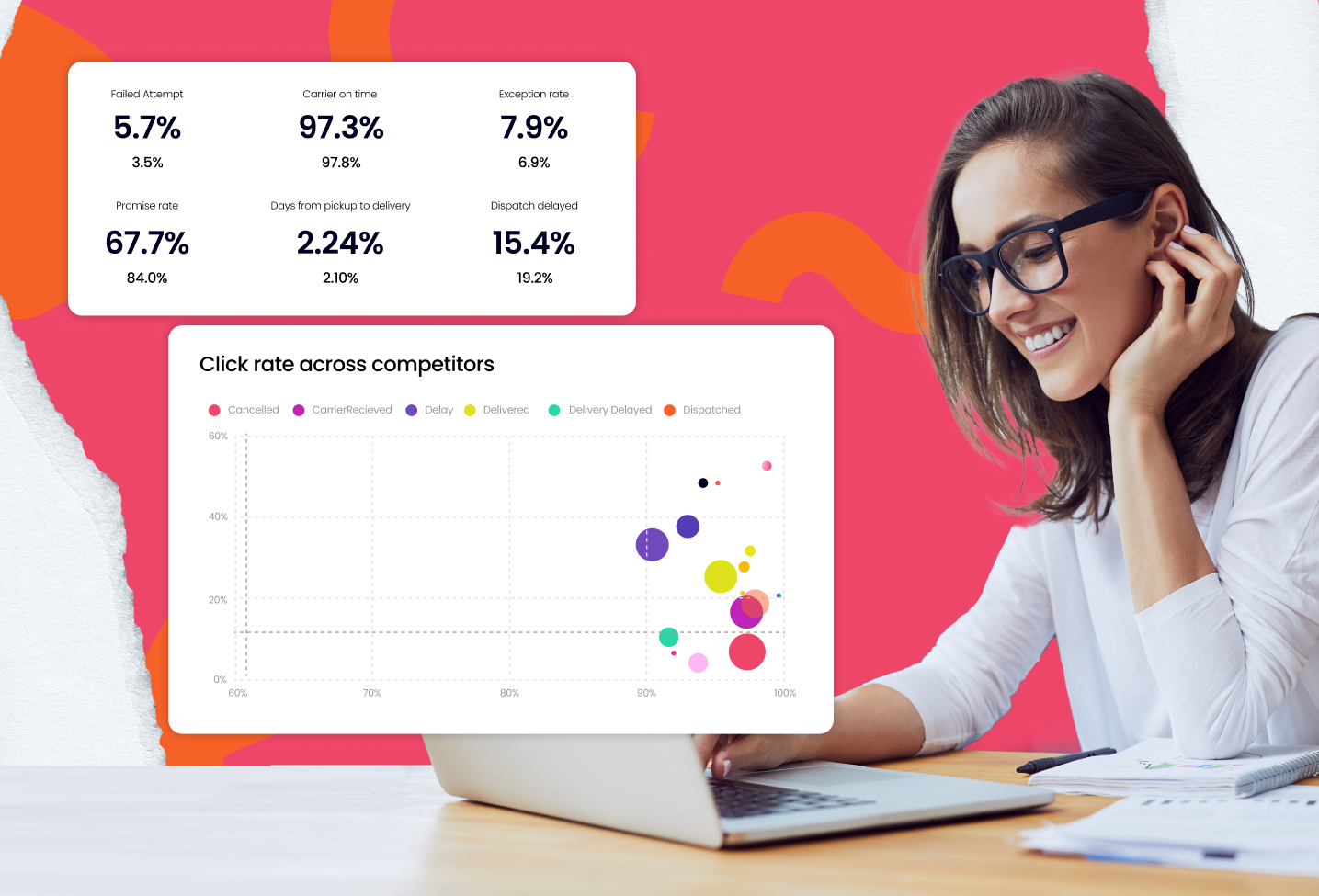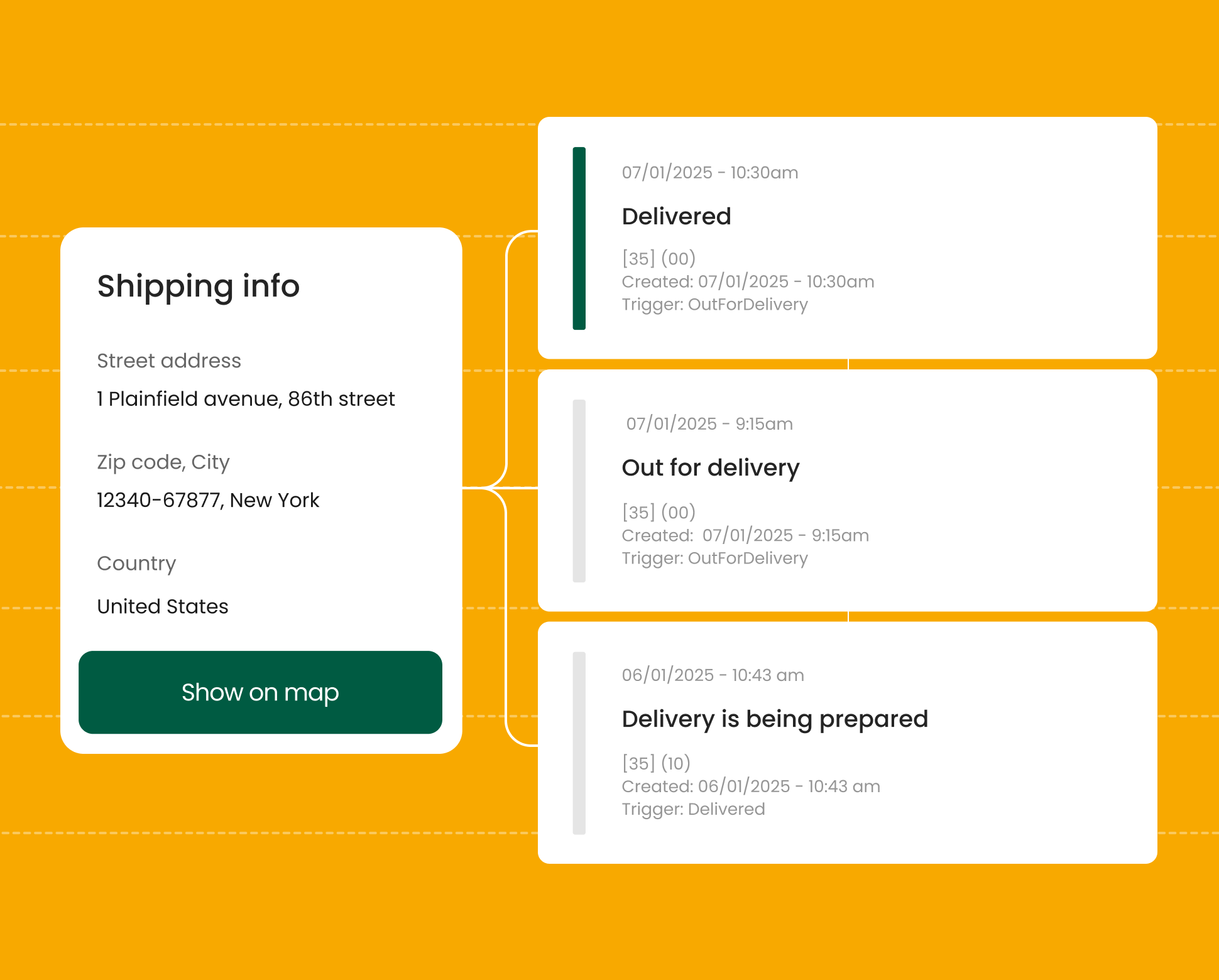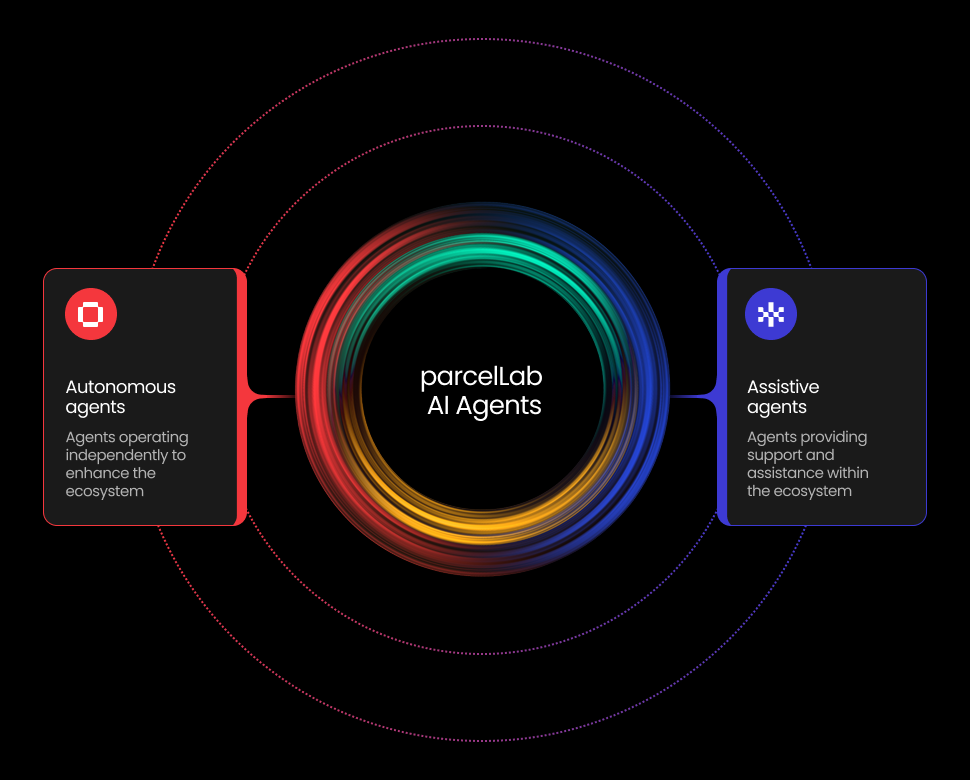The power of benchmarking data: How to successfully outperform your competitors

Getting the post-purchase experience right is hard. As competition intensifies and operational costs climb, brands find themselves in a unique position and have to answer the tough question, ‘What does success look like for a modern retailer?’
With over 91% of consumers willing to shop with brands that remember their preferences, delivering a post-purchase experience that is consistent and seamless is imperative. It does, however, come with acute growth opportunities like a growing maze of logistics demands and ever-evolving customer expectations. And with all these factors, customer engagement must be just right. Your customers need to receive the right information at the right time for it to truly resonate.
The need for real-time, actionable data has never been more critical. For retailers to navigate these challenges effectively, they need a clear view of how their performance stacks up against industry standards. Enter Benchmarking, parcelLab’s latest solution providing retailers with the data insights they need to measure, compare, and improve their post-purchase performance.
What is Benchmarking and how does it help?
Benchmarking is a powerful tool for retailers to measure their post-purchase performance, but it goes far beyond simple reporting. This latest feature gives retailers the ability to compare key metrics, such as carrier performance and customer engagement, against industry averages. It provides future-focused retailers with a clear view of where they stand in their market and helps them identify areas that are ripe for improvement.

Let’s further illustrate this with a scenario: Imagine you’re a retailer managing logistics across multiple regions. Some locations are hitting delivery SLAs, while others consistently miss the mark. You’re confused and can’t think of a strategy that ensures all the regions get their accurate needs met. This is when Benchmarking would come in to support you.
Benchmarking helps you pinpoint these discrepancies, showing you exactly where improvements can be made and providing insights into why certain regions may be performing better than others. It gets rid of guesswork and shows you actionable insights. This isn’t just about monitoring data; it’s about using data as a strategic tool for making informed decisions that enhance your operations and improve customer satisfaction and engagement.
In addition to the logistics performance, Benchmarking offers perspective on areas such as:
- Making sure your emails are reaching customers at an optimal time or;
- Showing if your content leads to increased engagement.
Benchmarking makes it easy for retailers to analyze their metrics and adjust communication strategies, as needed, to provide the best post-purchase experience to their customers.
In short, Benchmarking gives retailers access to comprehensive data to make proactive, data-driven decisions, keeping up with customer expectations and outpacing competitors.
Two key use cases
1. Logistics performance
When it comes to post-purchase, logistics performance is the backbone of customer satisfaction. Whether it’s late deliveries, failed first attempts, or high exception rates, a retailer’s reputation can be deeply impacted by a poor customer experience and nudge customers to shop with competitors.
Benchmarking arms retailers with a data-rich view of their logistics performance across regions and carriers, helping them to identify and address specific areas for improvement.
For logistics, Benchmarking can provide insights into key metrics such as:
- Carrier On-Time Percentage: How often are carriers meeting the delivery SLAs?
- Exception Rate: What percentage of deliveries face issues, and where are these problems most prevalent?
- Delivery on First Attempt: Are packages reaching customers the first time around, or are multiple attempts needed?
By aligning these metrics against industry standards, brands can work collaboratively with carriers to improve service levels.
Example:
If exception rates are consistently higher in a specific region, a retailer might discover that weather patterns or local infrastructure issues are the cause. Armed with this information, they can make proactive adjustments, such as adjusting delivery windows or working with carriers to optimize and avoid problem routes. In turn, this data-driven approach to logistics can enhance reliability, reduce operational costs, and ultimately lead to higher customer satisfaction and positive brand perception with shoppers.
2. Communication performance
In the post-purchase phase, communication is a powerful tool for loyalty-building. From order confirmations to delivery updates, each message presents an opportunity to engage the customer and reinforce their decision to choose your brand. But how do you know it’s working?
Benchmarking offers retailers a clear view of how their post-purchase emails perform compared to industry standards. Key communication metrics include:
- Open Rate: Are customers engaging with emails as soon as they’re sent, or do open rates lag?
- Click Rate: Do customers click through to view additional details, track orders, or explore related products?
- Open-to-Click Rate: How many customers who open an email actually take action?
With Benchmarking, retailers can see where their email engagement stands relative to the industry.
Example:
If open rates are consistently lower than industry averages, it could signal that the timing or subject line needs to be refined. For emails that are opened but not clicked, it might indicate that the content needs to be more relevant or engaging. By making these adjustments based on Benchmarking insights, retailers can drive higher engagement, reduce customer inquiries, and build loyalty through better, more meaningful communication.
Key benefits for retailers using Benchmarking
So, what are the tangible benefits of leveraging Benchmarking for post-purchase optimization?

1. Enhanced operational performance
Benchmarking empowers retailers to refine their logistics processes and boost operational efficiency. By identifying bottlenecks and collaborating with carriers to address specific issues, retailers can lower exception rates, improve delivery times, and ensure consistency across all regions. These improvements lead to smoother operations, lower costs, and a more reliable customer experience.
2. Improved customer engagement
Armed with powerful communication insights, retailers can understand what drives customer engagement and fine-tune their messaging strategy to serve it to shoppers. They can see which message types, subject lines, and send times resonate most, optimizing each touchpoint to perfect the post-purchase journey. This leads to higher engagement rates, fewer inquiries, and a stronger connection with customers, ultimately driving repeat purchases and brand loyalty.
3. Data-driven decision-making
In a rapidly evolving retail landscape, having access to industry benchmarks is a game-changer. Benchmarking provides the data that retailers need to make confident, strategic decisions. Whether it’s optimizing logistics or refining communication, retailers gain a competitive advantage by acting on real insights rather than guesswork. Now, retailers can continuously improve and adapt to shifting market conditions, ensuring they stay ahead of the competition and deliver the best post-purchase experience possible.
Conclusion: Powering the future with benchmarking
In today’s world, data isn’t just a tool; it’s a strategic asset. With parcelLab’s Benchmarking, retailers have access to a powerful data-driven solution that offers critical insights into logistics and customer engagement. This isn’t just about meeting industry standards—it’s about using data to set new standards and surpass customer expectations of post-purchase excellence. By leveraging the insights Benchmarking provides, you can enhance operations, deepen customer engagement, and make strategic decisions that build loyalty and drive growth.
As competition rises and customer expectations continue to shift, Benchmarking gives retailers the edge they need to not just keep up, but lead. Interested in learning more about parcelLab’s Benchmarking solution? Get in touch today!



